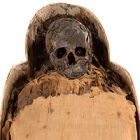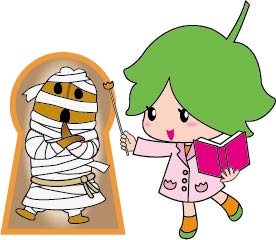Highlights of the Exhibition
Part 1: What Happened to People in Ancient Egypt After They Died ?
Ancient Egyptian people spent a lot of time and effort making mummies so that dead bodies would last forever instead of decaying. They believed that after a person died, his spirit would travel to the land of the dead. It would then return to its body and the person would live another life, similar to his previous one, in the Fields of Aaru. It was important to preserve the body so that the spirit could return to it. Let’s look at different objects that were buried with mummies to see how the dead travelled to the Fields of Aaru and what they did there.
How Mummies Were Made
It took about 70 days for skilled embalmers to make a mummy. The ancient Greek historian Herodotus wrote in his book, Histories, that there were three “grades” of mummy-making. Here is the most expensive one:
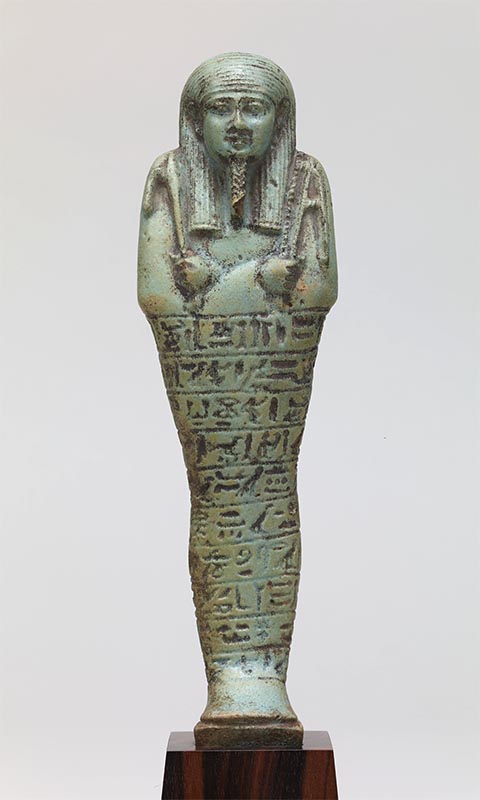 (no english)アメン神官のウシャブティ, Excavated in Egypt, Late period, ca. 664-332 BC (Gift of Mr. Momose Osamu and Mrs. Momose Fumiko)
(no english)アメン神官のウシャブティ, Excavated in Egypt, Late period, ca. 664-332 BC (Gift of Mr. Momose Osamu and Mrs. Momose Fumiko)1, The internal organs were removed and dried with the body using natron. This was a natural mixture of minerals, consisting mostly of sodium carbonate (similar to baking soda), that was gathered from the shores of the Nile. Natron absorbs moisture like salt.
2, The heart was the most important organ so it was put back inside the body. Other organs were put into canopic jars. But the brain, which was considered unimportant, was thrown away!
3, After the body was dried and shrunk as a result, it was stuffed and wrapped in many layers of linen bandages until it was back to its original size. It was them placed in a coffin. Sometimes protective Wadjet amulets, ushabti figurines, and other objects were kept with the mummy.
Part 2: Animals Were Gods in Ancient Egypt !?
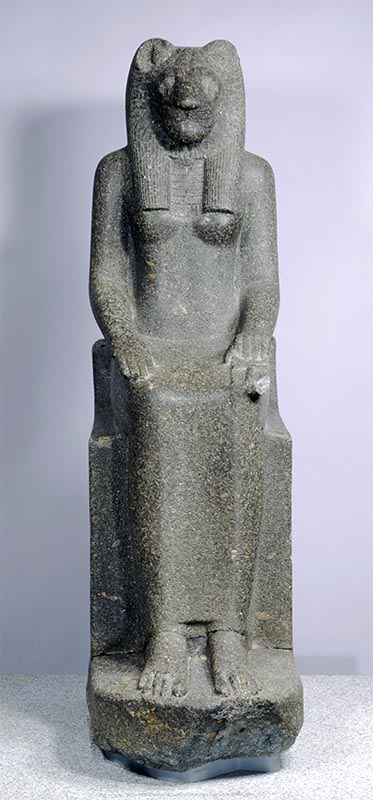 Statue of Lion-headed Goddess Sakhmet, Excavated at Thebes, Egypt, New Kingdom, 18th dynasty, 16th-14th century BC
Statue of Lion-headed Goddess Sakhmet, Excavated at Thebes, Egypt, New Kingdom, 18th dynasty, 16th-14th century BCThese are statues of gods and goddesses that were worshipped in ancient Egypt. Some gods, like Harpocrates and Amun, looked like humans, but most looked like animals familiar to the Egyptians. These included cats, fish, birds, lions, and hippopotamuses. In ancient Egypt, animals were seen as sacred creatures with wonderful abilities that humans did not have. Egyptian gods, who had superhuman powers, were shown symbolically as animals. These unique-looking gods used their powers to rule over different things like art, wisdom, fertility, and children.
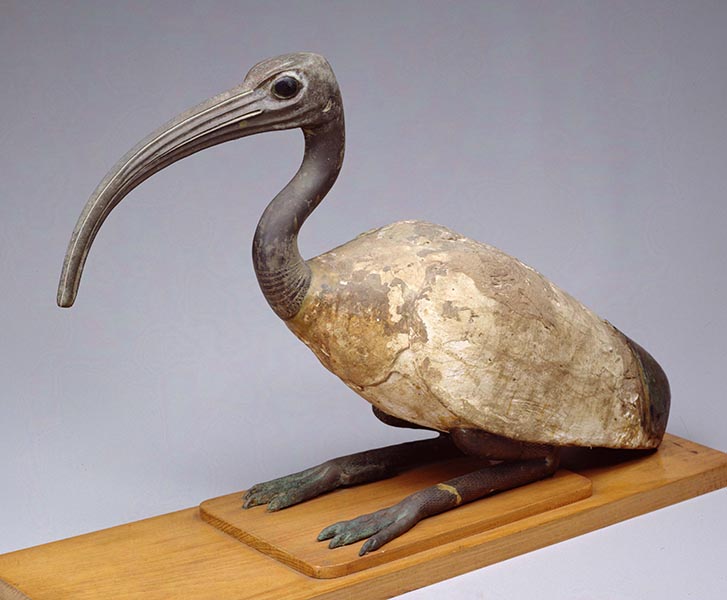
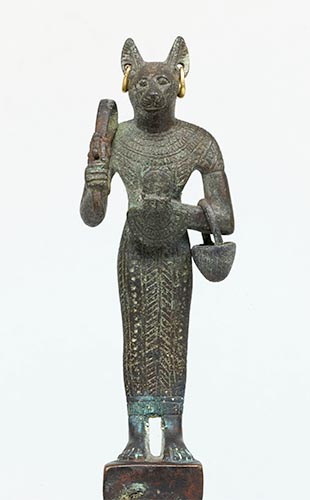 Statue of Ibis, Excavated at Tuna el-Gebel, Egypt, Ptolemaic period, 323-30 BC (Gift of Egyptian Government)
Statue of Ibis, Excavated at Tuna el-Gebel, Egypt, Ptolemaic period, 323-30 BC (Gift of Egyptian Government)
Statue of Goddess Bastet, Excavated in Egypt, Late period-Ptolemaic period, 5th-4th century BC (Gift of Mr. Momose Osamu and Mrs. Momose Fumiko)

